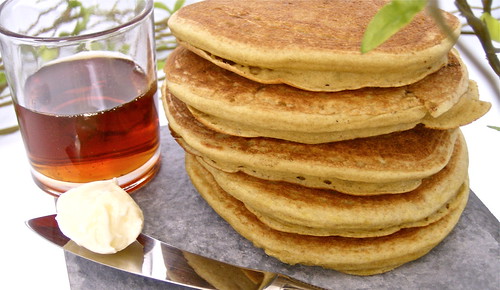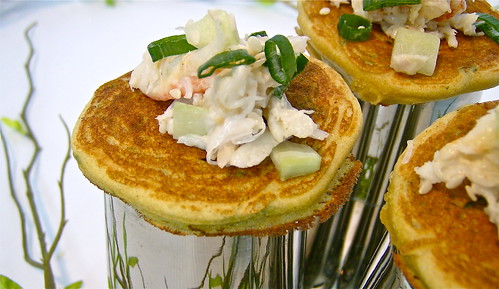“Local” is cuisine’s little black dress. When we’re feeling dowdy or boring, it’s an easy fix. It’s ubiquitously appropriate in its quietly chic and understated way, and when all else fails, or if it just isn’t good enough, it’s a standby we can always count on. While it’s comforting in its familiarity, it can be dressed up or down depending on the circumstances. It goes with everything. The bonus? This particular little black dress is flattering on everyone.
So you’re bringing an impromptu dinner over to your friend, who just had a baby. She’s busy, distracted, and frankly, she’s stuck in Babyland. She eats a bite of bagged baby carrot here or a sandwich there between feedings and hopefully, naps. You want to bring her something special, but hey: you’re busy too. This happened to me just last week. I threw together a beef noodle soup using some amazing beef from Oaklands Farm in Gardiner, ME, run by friends of ours who raise the most amazing grass- fed Black Angus you can imagine. Now, in a beef soup, you’re not going to convince me that you can tell the difference between store and local beef. Sure, you may notice a difference in the way you feel after you eat it, but taste-wise, high quality and lovingly-prepared braised stew beef is braised stew beef regardless of whether the tractor the farmer drives was subsidized by the USDA. Rather, cuisine’s little black dress adds the “oomph factor” when we’re trying to impress. Just as knowing the dress’s designer can affect how we feel when wearing it, knowing the farmer who raised that tough little nugget of beef can make a humble dish seem somehow, well, elevated.
Similarly, local foods provide a reliable standby for those times we’re looking for that certain “something” in our meal, whether it be a novel addition, a comforting familiarity, or simply a solid foundation to riff off of. Along with that soup I brought my friend, I served ployes. Ployes are peasant food, a simple pancake made from buckwheat, flour, water, and baking powder. Indigenous to and produced in the St. John Valley, a small area spanning the border of Maine and New Brunswick and Quebec, ployes are the staple of the French-speaking Acadian culture, and they’re served at any self- respecting family meal up there. A baguette or a yeast roll would’ve been predictable; however, a ploye was an unexpected and welcome change. With their neutral flavor and universally appealing crispy-soft texture, everyone loves them. Every culture and area has its own “ploye”—whether it’s a unique herb, a quick bread, a rare mushroom, or a favorite wild game. It’s worth finding out what yours is, since you’ll always have something to impress with, if only to say, “This comes from where I come from, and I want to share it with you.”

But just because your local specialty is Plain Jane on its own doesn’t mean it has to stay that way. My friends in western New York have venison coming out of their ears all year long. But that doesn’t mean that they’re limited to venison steaks and venison stew and venison spaghetti sauce. A thick- cut and impeccably-spiced venison jerky is an amazing foil to the beautiful cheeses that area produces. A venison pâté or terrine, sliced and served with seasonal wild onions takes less than an hour to put together and would easily sell for $15 a plate at any self-respecting restaurant. The beauty of local foods, like the little black dress, is that they’re rarely complicated on their own. Sure, local seasonings and sauces like a Oaxacan mole and even Connecticut’s chili sauce for hot dogs can have impossibly complex flavor profiles and preparation methods; that said, these items serve as accessories to the chickens raised in the courtyard or the sausages that the butcher blended yesterday. With or without the flashy jewelry, the locally-sourced product stands perfectly fine on its own merits—the low-impact sourcing, the pride of the producer, and the appreciation of the connoisseur. These things never go out of style.
Local goes with everything. It’s more of a personal style than it is a particular direction or focus: it’s a theme. For many, it’s a way of life, and the local food is meant to be tasted in its element, respected by its simple preparation. Vegetables and fruits that haven’t traveled thousands of miles to meet our mouths seem richer: they taste more of themselves. But as with the stew beef from my soup, even absent the flavor difference, local foods possess a psychic benefit. They say: “This is from my home. This is for you.” And there aren’t many people who can impart or receive a meal with so much underlying meaning without feeling its effects long after the bite is swallowed.

Research has shown that people naturally eat less when they eat local. Some studies suggest it’s because the food often costs more than its factory-farmed counterparts while others claim that local food means more to us, causing us to treat it more carefully and respectfully. It’s like we’re considering it a precious jewel rather than just a plain white t-shirt. I personally think that it comes down to a sense of responsibility that we feel as we consider the farmer’s chapped hands, the places where our kids play, the local hardware store’s viability, and the community that embodies them all. Adding on our own flair, committing our time, and thinking about the details is how the little black dress of the food world comes into its own and becomes our own creation. The faceless bag of onions and the mass-farmed venison no longer seems quite enough for our dear friend blessed with a new baby, and it certainly explain what it—and we—are all about. With our good work and our solid roots, someday the baby—and perhaps everyone we meet and love—will taste a meal that tells a story about what it means to come from a place.
Buckwheat Pancakes (Gluten-Free)
If you choose the source of your buckwheat flour carefully, these pancakes are gluten-free. Using whipped egg whites gives them loft and tenderness to rival a traditional pancake–well worth the work.
Servings: 4 (109 g )
Prep Time: 10 min.
Cook Time: 30 min.
Ingredients
- 1⅓ cup buckwheat flour
- 2 tsp. baking powder
- ¼ tsp. salt
- ⅓ cup plain yogurt
- ⅓ cup skim milk
- 2 Tbsp. water
- 1 Tbsp. melted butter
- 2 tsp. vanilla extract (optional)
- 2 egg whites
Directions
- Combine the flour, baking powder, and salt in a medium mixing bowl.
- Whisk together yogurt, milk, and water. Add the melted butter (and vanilla, if using) to the milk mixture and stir to combine.
- In a clean metal or glass bowl, beat the egg whites with a mixer until soft peaks form (2-3 minutes).
- Combine the dry and liquid mixtures together. Add half the beaten whites and stir gently to combine, then add the remaining whites and fold gently into the batter, preserving as much air as possible. Allow to stand until bubbling (2-3 minutes).
- Heat a griddle over medium-high heat. Ladle about 2 tablespoons of batter onto the pan to form a 4″ pancake. Cook until center is bubbly and edges are dry (1 and a half minute). Flip and continue to cook until the center is done (30-45 seconds). Remove to a plate in a just-warm oven and repeat this step until batter is gone.
- Serve hot, topped with fruit.
Savory Pancakes for Canapes
Savory pancakes are an excellent base for simple canapes, and these buckwheat pancakes can be gluten-free if you choose the right flour. We’ve shown you an option topped with a simple crab salad, but the base is flexible: get creative!
Servings: 12 (63 g )
Prep Time: 30 min.
Ingredients
Pancakes:
- 1⅓ cups sifter buckwheat flour
- 2 tsp. baking powder
- ¼ tsp. salt
- ⅓ cup non-fat plain yogurt
- ⅓ cup skim milk
- 2 Tbsp. water
- 1 Tbsp. unsalted butter, melted
- 1 egg
- 1 egg white
Wasabi-Lime Crab and Cucumber Salad:
- 4 oz. crab meat
- ⅔ cup chopped cucumber
- 2 tsp. sesame seeds
- 1 tsp. wasabi paste
- 2 Tbsp. mayonnaise
- 1 Tbsp. lime juice
Garnish:
- ⅓ cup chopped scallions
- 2 tsp. toasted sesame seeds
Directions
- Combine the flour, baking powder, and salt in a medium mixing bowl.
- Whisk together yogurt, milk, water, and melted butter. Whisk together egg and egg white and add to liquid mixture.
- Combine the dry and liquid mixtures together, stirring gently until just combined. Let stand until bubbling (2-3 minutes).
- Heat a griddle over medium-high heat. Ladle about 2 tablespoons of batter onto the pan to form a 2″ pancake. Cook until center is bubbly and edges are dry (30-45 seconds). Flip and continue to cook until the center is done (30 seconds). Remove to a plate in a just-warm oven and repeat this step until batter is gone.
- Gently toss salad ingredients together.
- Serve pancakes topped with about a teaspoon of salad and top with garnishes.
About the Expert Chef
Erin Dow balances three food worlds. As a mother of three young children, she’s fighting the battle every parent faces: how to keep her kids interested in the foods that keep them healthy.
As the chef and owner of her catering company Eatswell Farm, she utilizes original recipes and techniques–focused on enhancing the enjoyment of locally-sourced ingredients–to best interpret the client’s vision. And as Consulting Executive Chef for Falmouth-based Professional Catering Services, a business specializing in production and backstage catering for concerts, she develops and executes menus that accommodate the strict nutritional requirements of the music industry elite.
Erin and her family raise their own chicken for meat and eggs, have dabbled in pastured Narragansett turkeys, and have a very weedy but very large and productive garden.